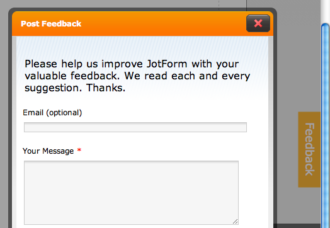Without feedback, growth — both personally and professionally — would be difficult. Colleagues wouldn’t know how to better contribute to the team. Salespeople wouldn’t hone their selling skills and increase their close rates. Managers wouldn’t improve their leadership skills.
People need feedback to know how their actions and behaviors impact those around them, but delivering constructive feedback is a bit of art and science. In this guide, we walk through everything you need to know to develop, collect, and deliver feedback appropriately.

Chapter synopsis
- Introduction
- What is constructive feedback? We start by covering the basics of feedback, including types of feedback, the qualities of effective feedback, and how to ask for feedback.
- Peer constructive feedback. Giving and receiving feedback among peers in the workplace is a lot like the process between a manager and employee, but it does have a unique context.
- Employee constructive feedback. If you’re looking for tips on delivering feedback to employees, this is the chapter for you. There’s great advice on how best to approach the process and when.
- How to collect constructive feedback. Chapter 2 covers the basics of feedback, but this chapter shares some specific feedback styles you can try in your organization. We also cover how you can use Jotform for collecting feedback — regardless of the style you choose.
Remember to bookmark this guide for later reference. You never know when you might need to brush up on giving feedback or want to try a new feedback style.
What is constructive feedback?
Feedback provides an opportunity for someone to gain insights about their personal or professional actions and behaviors. Why is feedback important? Andy Bailey, founder and coach at Petra Coach, says it’s crucial for people to acknowledge where they stand in their interpersonal relationships and with the quality of their work product.
“We’re creatures of habit, so without feedback, we tend to continue moving forward in the same way we always have, often without realizing our shortcomings. We need others to stop and tell us what they are seeing, so we can incorporate outside thoughts and suggestions into our ideas of ourselves and improve accordingly,” Bailey says.

According to Arquella Hargrove, president of Epic Collaborative Advisors, a common feedback scenario involves a manager and an employee discussing on-the-job performance. Another, more personal scenario, is when married couples exchange feedback to keep their marriage strong.
Why is constructive feedback important? It provides a number of benefits:
- Improves performance. Constructive feedback includes clear suggestions for how a person can develop or enhance their professional or personal behavior.
- Creates a positive environment. Constructive feedback ensures that people have higher morale as they begin to work on their weaknesses.
- Minimizes confusion. Cryptic comments often lead to misunderstandings, whereas constructive feedback is rooted in specificity and clarity.
- Strengthens relationships. The focus of constructive feedback is improvement. There’s an underlying sense of mutual trust and camaraderie involved.
- Avoids mistakes. With a culture of constructive feedback in place, people can reduce mishaps and pitfalls by focusing on continuous improvement.
Breaking down constructive feedback
Types of feedback
Feedback can be classified in a few different ways:
- Positive versus negative. Positive feedback is about affirming that the recipient is doing something as expected. In contrast, negative feedback lets someone know their actions need to be corrected. “This could be telling someone they’re exhibiting inappropriate behavior at work,” says Hargrove.
- Formal versus informal. Formal feedback is typically given on a set schedule and is much more involved, such as an annual review. Informal feedback tends to be brief and is usually given shortly following an action or event. “It may be more random, like a quick aside in the hallway or a response sent via email,” explains Bailey.
- Annual versus monthly. Feedback can be given at different intervals; annual, biannual, and monthly reviews are common in the workplace. However, more frequent feedback — weekly, daily, or even throughout the day — may be warranted, such as when a new employee is being trained.
- Verbal versus written. Feedback may be given verbally, in writing, or through a combination of both forms. In most cases, written feedback is considered more formal.
- Manager versus peer. The type of feedback given depends on the relationships of the people involved. For example, a manager and a peer would have different perspectives in their feedback to an employee.
Qualities of effective constructive feedback
Feedback can be ineffective if it isn’t given in the right manner. Bailey and Hargrove note that the most effective feedback has several qualities:
- Objective. “Keep your personal feelings toward the person at bay,” says Bailey. Even if you’re not pleased about the situation, any hostility in your tone could cause the recipient to automatically shut down or become defensive.
- Timely. “Don’t wait a month to say something you should have said immediately after the fact,” says Hargrove. She explains that, in many cases, feedback should follow quickly after an event while it’s still fresh and clearly referenceable.
- Constructive. Show you respect the receiver and that you’re giving feedback with their best interests in mind.
- Actionable. Feedback must include advice that the receiver can translate into immediate next steps, rather than telling them what they’ve done wrong just for the sake of getting it off your chest. “Help them set up measurable performance indicators based on your feedback that they can track of moving forward,” notes Bailey.
- Warranted. It can be difficult as a leader to avoid micromanaging, but it’s crucial that you don’t give feedback for every decision or action your employees make. “Give them the space to make mistakes and learn from them. If they aren’t showing they’ve learned and corrected on their own, that’s when you can step in and provide insight,” explains Bailey.
How to ask for constructive feedback
Bailey says that asking for feedback requires self-awareness and humility, crucial traits for business professionals. He says you must honestly ask what needs fixing to be able to make effective changes. It can be as simple as stopping by your supervisor’s or peer’s office and asking for their thoughts, or setting up a more formal time to meet and discuss. “However, if you ask for feedback, make sure you are prepared for and open to receiving it,” Bailey cautions.
When receiving feedback, Hargrove says to keep an open mind. Ask follow-up questions to clarify and better understand what the person is trying to communicate. Don’t be on the defensive. “Remember that the person giving the feedback probably doesn’t like delivering it. Be introspective and see how you can use what they said to improve moving forward,” Hargrove says.
How to give constructive feedback
Providing effective constructive feedback is a special skill and requires some forethought and planning. When giving constructive feedback, it’s important to
- Be as specific as possible. Before launching into feedback, take some time to write down clear examples of what you want to discuss. For example, if you want to provide feedback on a particular behavior, note some examples of when that behavior occurred and specifically how it can be improved.
- Focus on the positive. While constructive feedback includes improving upon weaknesses, it’s vital to use positive language during the interaction. Be sure to discuss what the individual is doing well and what their strengths are, and then lead into what they can improve. Starting out the feedback session on a negative note may cause the person to become defensive.
- Consider the surroundings. It’s important to choose the right place and time to provide constructive feedback. Be sure to address the issue you want to discuss in a timely manner, as opposed to waiting weeks or months. Plus, make sure the environment is right for the discussion — for example, is a formal meeting warranted, or should you just have a quick chat in the break room?
- Ask questions. Constructive feedback is a dialogue, not a monologue. Ask questions to ensure you understand the whole situation, and continue to check in with the individual during the conversation to make sure they’re following along and feel comfortable sharing their thoughts.
Now that we’ve solidified the concept of feedback, let’s move into one of the feedback areas we mentioned above: peer feedback.
Peer constructive feedback
Giving feedback to a peer can seem even tougher than giving feedback to a subordinate — with peer-to-peer feedback, you lack authority. As a manager or supervisor, you’re expected to criticize employees’ work, if warranted. But as a peer, you aren’t afforded that same expectation, which is why it can often be difficult to let a coworker know they’ve done something wrong.
Below are several considerations and tips for giving peer feedback to help minimize friction.

Peer feedback considerations and tips
- Give feedback directly and privately.
- Do it in the moment. Charlie Marchant, general manager of Exposure Ninja says, “It’s better to address the situation when it’s fresh in everyone’s mind.”
- Be positive and genuine. Your feedback should come from a place of support and encouragement; however, Marchant recommends avoiding compliment sandwiches — placing a criticizing statement between two positive ones — because they can often come off as patronizing.
- Focus on your peer’s behavior as opposed to their personality. Marchant explains because our personality is such a deeply embedded part of us, criticism about it often feels like an attack. “Critiques about our behavior, however, are more constructive and more readily accepted. It also helps to provide clear examples of the situation or issue,” Marchant says.
- Assess whether you’re the person best suited to deliver the feedback given the situation or context. You may need to inform the person’s manager and let them decide how to approach the situation.
- Be open to and invite feedback from your peers. Having an open feedback loop will make it easier to both give and receive feedback.
Peer feedback forms
In the workplace, peer feedback forms are often used to provide managers with a broader perspective on their employees. In their supervisory capacity, managers may not see every aspect of an employee’s overall performance, such as their relationships with clients and dynamics with coworkers. Peer feedback forms help fill that knowledge gap so managers can make more informed decisions come review time.
Here are some example peer feedback questions you might ask on such a form:
- How often does John complete tasks on time?
- What are Jane’s greatest strengths?
- What areas of work could John improve in?
- Does Jane collaborate well with other team members?
- How successfully has John performed when taking a leadership role on the team?
- How much do you agree that Jane contributes her fair share to the team given her role?
With peer feedback covered, we move on to the manager’s perspective in giving employee feedback.
Employee constructive feedback
“Feedback is important because we are social beings with a natural desire to know how our performance is viewed by others, and this concept extends to the workplace,” says Bradley Wilson, director of research and insights at Perceptyx.
He also notes that feedback is an opportunity to identify blind spots we may have regarding areas where we can grow and improve. Below we cover several tips you can use to deliver feedback to employees more effectively.

Employee feedback considerations and tips
In addition to the qualities of effective feedback from Chapter 2 — timely, specific, balanced, and actionable — Amie Devero, strategy consultant and executive coach, says, “To give useful feedback to employees, you need to have a plan beforehand; otherwise, your guidance won’t provide much value.”
Identifying an employee’s strengths, weaknesses, and potential trouble areas lets you know how to parse your positive and critical feedback, and to what extent.
For example, consider a salesperson who has below-average close rates for new business compared to a one who regularly generates few to zero leads. The first employee may need a little feedback on sealing the deal, while the second likely requires more significant intervention.
Similarly, flight attendants are expected to provide engaging customer service to passengers, but some may approach interactions in a transactional manner or even be slightly rude. Compare this to a flight attendant whose personal issues consistently impact their attendance, setting off a domino effect of delayed flights. Again, a little feedback could go a long way in improving someone’s demeanor, but it may not be as effective for someone who is habitually late.
Employee feedback forms
To gather feedback, Wilson recommends using employee feedback forms. Questions should be aligned with organizational values or competencies so that you can gather feedback related to both performance (objective measures) and demonstration or reinforcement of an organization’s priorities (subjective measures).
An employee feedback form should address past or current performance, along with future-oriented aspects about how the person can continue to grow. Oftentimes, he says, top performers are most frustrated by feedback that only confirms the good they do. For example, “You’re doing great! Keep up the good work.”
While the phrasing sounds nice, Wilson explains that it shows little thought on the part of the manager and doesn’t provide much value to the employee. “It may be true that they’re doing a great job, but top performers want to be challenged. They want to know you’re invested in their professional future, and that means giving the feedback they need to grow and improve beyond their current abilities.”
One important aspect of an employee feedback survey is that there should be no surprises. Wilson explains that if an employee is surprised — whether positively or negatively — then the manager has not done the job of providing regular feedback prior to the formal feedback session. “The employee has thus missed out on multiple opportunities to adjust their behavior over time based on the knowledge withheld by the manager,” Wilson says.
Giving employee feedback is essential, but so is gathering feedback from customers. In the next chapter, we cover how to collect feedback from various external groups.
How to collect constructive feedback
When you manage multiple employees or departments, constructing and collecting feedback may seem overwhelming. Which style and tool are best to get the job done? Below we cover several feedback styles you can try, and introduce an easy-to-use feedback collection tool: Jotform.

Styles of feedback
Real-time feedback
Throughout this guide we’ve noted the importance of timeliness in relation to giving feedback. Real-time feedback keys in on this concept, as it’s provided in the moment or immediately following a specific event or behavior.
Loren Margolis, founder of Training & Leadership Success, says real-time feedback is the most important type of feedback for managers to use with employees because of its timely delivery. It immediately reinforces positive behaviors, and/or points out ways to change undesirable actions if improvements need to be made.
“Real-time feedback also creates a direct link between the employee’s actions and the perception of those actions from their peers and manager,” she says.
Margolis also calls out an important concept managers should champion within their organizations: psychological safety. This concept is all about feeling safe enough in the workplace to be yourself, take risks, speak up, believe your ideas are being heard, and not be judged.
Performance feedback
Compared to real-time feedback, performance feedback is more formal — typically because it tends to be scheduled, such as an annual performance review. Whenever it occurs, performance feedback covers both positive and constructive communications about an employee’s performance.
Robert Satterwhite, Ph.D., partner and head of the leadership and organizational effectiveness practice at Odgers Berndtson, says organizations that have a learning and development culture encourage managers to provide regular and ongoing feedback outside of the formal performance review cycle. This not only ensures that employees exhibit the right behaviors throughout the year but also reduces surprises come review time.
“When done right,” Satterwhite says, “performance feedback reinforces behaviors that are consistent with organizational and team strategies, goals, and tactics. In addition, it should include the identification and ongoing monitoring of developmental goals and associated activities, resources, timeline, and metrics.”
360-degree feedback
360-degree feedback differs from other styles of feedback in that it comes from a combination of people connected to the employee, including the employee themselves, direct reports, peers, and their manager, among other potential raters.
“You need a comprehensive swath of people surrounding the recipient to deliver a true, 360-degree perspective,” Margolis explains.
Satterwhite adds that some companies seek additional perspectives from other key stakeholder groups such as board members and customers. In any case, the importance of 360-degree feedback is in enhancing the employee’s understanding of how their performance positively or negatively impacts constituents who are up, down, and across the organization.
The goal is to provide multiple perspectives to clearly highlight strengths an employee can leverage, gaps they need to shore up, and developmental areas they should focus on. “For example, consistently positive feedback from direct reports, coupled with consistently constructive feedback from the manager, likely indicates the employee needs to spend more time managing up and less time managing down,” Satterwhite says.
Collecting feedback through forms
“Collecting feedback via a form or survey has a variety of benefits, particularly when collected online,” says Satterwhite. He explains that forms can guide respondents through the feedback process, which encourages a structured, consistent approach to data collection. Satterwhite notes how forms can be used in practice:
- Feedback surveys allow respondents to provide quantitative-based ratings on job-relevant competencies or behaviors, as well as qualitative feedback. Here’s an example of a qualitative question: What should this individual start doing to be more successful in their role?
- Metrics-based forms allow for comparisons over time (e.g., scores year over year) as well as between participants (e.g., team members).
- A 360 degree-based format allows individuals within a group (e.g., direct reports) to provide anonymous ratings and feedback; in these instances, data is presented as both an average and a range. For example, a wide range of ratings from direct reports on the competency of talent development would indicate that not all individuals on a team feel they’re getting the support they need to develop in their role and/or career.
Margolis adds that it’s important for managers to use the same form for all employees. “You must ensure all assessments of performance and other aspects of employees’ work and interpersonal interactions are evaluated fairly.”
Jotform + feedback
If you need an easy way to collect feedback for all your employees, try Jotform, the simple yet powerful Form Builder. With Jotform, you can create surveys and collect and track feedback. We have hundreds of ready-made feedback templates you can customize to your liking. Modify the questions to better suit your needs, and even add your own company branding.
With Jotform, you can
- Collect employee feedback for whatever feedback style you’re using, including real-time, performance, and 360-degree
- Survey and collect feedback from peers
- Request and collect feedback from customers about a recent experience, event, product usage, and more
Ready to improve your approach to collecting feedback? Get started with Jotform today.
About the contributors
Amie Devero
Amie Devero has more than 25 years of experience as a strategy consultant and executive coach. Along with her experience fostering leadership and excellence in strategic decision-making and organizational performance, Amie is a frequent keynote presenter at industry conferences. Previously, she served as the chief executive of mobile parking payment platform iControl Mobile Payment Solutions and as the president of its acquirer, RingGo.
Andy Bailey
Andy Bailey is the founder of Petra Coach. He assists business owners and entrepreneurs in building the solid foundation that allows them and their teams to achieve their goals, both business and personal. His aim is to develop cultures that impact every team member in a positive way.
Arquella Hargrove
Arquella Hargrove is president of Epic Collaborative Advisors, a company that provides workforce development, communications, and strategy services. She is also a facilitator, leadership consultant, speaker, and coach dedicated to bringing out the transformative and sustainable results of people through development.
Bradley Wilson
Bradley Wilson is the director of research and insights at Perceptyx. He leads the team responsible for Perceptyx’s survey design, results analysis, and executive reporting. He has significant experience developing key performance indicators, maximizing data confidence through assessment design, linking employee survey data to organizational strategy and objectives, and leveraging data to improve speed and confidence in corporate decision-making.
Charlie Marchant
Charlie Marchant is the general manager of Exposure Ninja. She oversees operations at the company, and has past experience building teams from scratch. She is the coauthor of The Ultimate Guide to Content Marketing and is a regular speaker at BrightonSEO.
Loren Margolis
Loren Margolis is the founder of Training & Leadership Success, a global leadership development consultancy that provides leadership and team development programs and executive coaching services. She has an in-depth background in psychology, training, and proficiency in adult learning. Her leadership development expertise and career success advice has been featured in Forbes, USA Today, Business Insider, and The Muse.
Robert Satterwhite, Ph.D.
Robert Satterwhite is a partner and head of the leadership and organizational effectiveness practice at Odgers Berndtson, a global executive search firm. He helps organizations strategically manage executive selection, succession, and development, including assessment, onboarding, coaching, high-potential identification, and team effectiveness.











































































Send Comment:
2 Comments:
More than a year ago
Thanks for sharing this blog. Constructive Feedback is necessary for a employee motivational growth.
More than a year ago
I've always had a tough time while providing feedback and suggestions to my employees and my peers. I was even having a tough time with my family when it came to providing feedback!
I also knew that, for a change to happen in a positive direction, providing constructive feedback was essential. I wanted to start changing my approach to feedback by trying out employee evaluation forms since I thought that not having to do the conversation face to face, people can be more honest and less stressed.
I really cannot believe how much it improved things in my office. I received and provided great feedback that solved many known and unknown issues.
It is now time for me to create a family evaluation form, I doubt that the feedback would be as professional :)